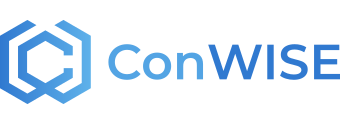The first 100 days: 5 tips for leaders
Whether you are taking on a new leadership role with your current employer or moving to a new employer, the “first 100 days” will be critical to how you are perceived. It would be fatal to let three months pass by without achieving initial successes. So use your first 100 days strategically. The following 5 tips will help you:
- Involve as many people as possible around you
- Identify the problems but also the opportunities
- Work out strategies together
- Always proceed in a structured manner
- Show concrete results and initiatives
Tip 1: Involve as many people as possible around you
In the first few days and weeks you should mainly listen and take stock. Although the focus is on your “own” employees, you should also involve your superiors and managers from other departments. Ask for feedback on suppliers and external service providers regarding past and future cooperation. The impulses and advice of external management consultants can also be very helpful. But avoid larger consulting engagements and presence in the house. On the one hand, the high costs of consulting work can speak against you as a prudent manager. On the other hand, the involvement of consultants always creates distrust among their own employees as well as questions about their own competence. You should therefore only use external consultants on a selective basis and ideally use digital consulting services for support.
Tip 2: Identify the problems but also the opportunities
You will spend some time analyzing your new environment. Be careful not to focus one-sidedly on the problems and get lost in the details. Instead, always work out the chances and possibilities for the future. This also applies if you received the new management position with the advice to solve the existing problems. Ultimately, it’s a look back and you’ll be appreciated when you’ve fixed the problems, which equates to meeting expectations. However, you will be viewed as a manager with great prospects for the future if you can also show the opportunities for further development. So always pay attention to the weaknesses and strengths, to the risks, but also to the possibilities in your analyses. Combine existing strengths with emerging market opportunities and use methods such as ConWISE’s ‘Competitive Advantage Finder’.
Tip 3: Work out strategies together
After you have analyzed your environment and the current situation, you can develop initial strategies and prepare and make decisions.
It is recommended that you work out these strategies together with your employees. Also include other areas of the company with which there is a dependency. It is also advisable to call in your superiors from time to time. Less as part of the elaboration than as part of a feedback provider and early sponsor of your plans. The occasional use of a consultant in the sense of a sparring partner can also be very revealing. But here, too, the strategy should be developed in-house and not outsourced to a consulting firm. Ultimately, it will be your employees who will then put these strategies into action. You will also get to know your employees even better. You can see which employees have similar ideas as you. And you can see who finds change difficult or easy.
Tip 4: Always proceed in a structured manner
Your procedures and decisions should be clear, transparent and structured. Even if decisions are accompanied by negative consequences, employees should know how they came to the decision. Use structured methods for decision-making. In this way you make it clear that decisions are not made purely from the gut, but that you have dealt with them and taken different perspectives in advance. A good example here is the application of the Six Thinking Hats method. In this way, employees perceive decisions as fair, well-reflected and appropriate. But the development of strategies should also be structured and not the expression of a random product. Incidentally, a large part of the consulting service consists of using a structured process. You can also use these methods for yourself.
Tip 5: Show concrete results and initiatives
Concept papers can make an impression at first glance, but they don’t really get you anywhere if they can’t be implemented. Always pay attention to concrete initiatives, but don’t fall for actionism. You can do this, for example, by always concentrating on the 3 most important activities. Meet qualitative goals and statements with measurable target values, specific deadlines and responsibilities. One likes to hear the arguments “we’ve never done it like this before” or “it doesn’t work”. In these cases, ask for specific improvements or changes that can also be implemented in the short term. Always confront your employees with the question. “What could we specifically start doing or tackling differently tomorrow?”. Enter your projects in roadmaps and set concrete goals for your area and the individual employees. A good approach that supports you is, for example, the OKR method – OKR stands for Objectives and Key Results and is a management system for targeted employee management.
Conclusion: Successful start in a new management position
The 5 tips listed here for a successful start in a new management position are not only relevant at the start, but should form the basis of your daily activities.
You can use the necessary methods immediately on our digital consulting platform. This does not require familiarization with theoretical concepts or participation in workshop series or seminars. ConWISE is practice-oriented, interactive and can be used immediately in a team. Contact us!

